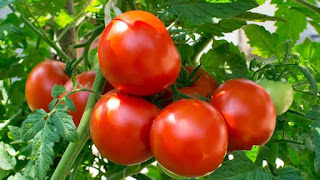Can Tomatoes Replace Blood Because They're Red?
Introduction:
The captivating red hue of tomatoes has spurred speculation and intrigue regarding their potential similarity to human blood. From ancient folklore to contemporary urban legends, the notion that tomatoes could substitute blood due to their crimson color has occasionally circulated. However, while tomatoes possess a vibrant red pigment known as lycopene, the idea that they could replace blood is entrenched in misconception rather than grounded in scientific reality.
Unraveling the Red Hue:
Tomatoes owe their vibrant red coloration to a potent antioxidant compound called lycopene. This carotenoid pigment is not only responsible for the striking appearance of tomatoes but also confers various health benefits. Lycopene, found abundantly in tomatoes and other red-hued fruits and vegetables like watermelon and pink grapefruit, is celebrated for its potential role in reducing the risk of chronic diseases and promoting overall health.
The Complexity of Blood Composition:
Blood is a remarkably complex fluid, comprised of an intricate array of components that work synergistically to sustain life. Beyond its red color, blood consists of red blood cells, white blood cells, platelets, and plasma, each playing indispensable roles in maintaining physiological equilibrium and supporting bodily functions.
1. Red Blood Cells (Erythrocytes):
• Red blood cells are specialized cells responsible for transporting oxygen from the lungs to tissues throughout the body.
• Through the protein hemoglobin, red blood cells facilitate the exchange of oxygen and carbon dioxide, enabling cellular respiration and energy production.
2. White Blood Cells (Leukocytes):
• White blood cells form the backbone of the body’s immune system, defending against pathogens, viruses, and foreign invaders.
• They patrol the bloodstream, lymphatic system, and tissues, identifying and neutralizing threats to the body’s well-being.
3. Platelets:
• Platelets are small, disc-shaped cell fragments that play a crucial role in hemostasis and blood clotting.
• Upon encountering a damaged blood vessel, platelets adhere to the site, forming a plug to staunch bleeding and facilitate tissue repair.
4. Plasma:
• Plasma, the liquid component of blood, constitutes the majority of its volume and serves as the transport medium for nutrients, hormones, and waste products.
• It facilitates the circulation of essential substances throughout the body, maintaining homeostasis and supporting cellular function.
Tomatoes: Nutritious but Incomplete:
While tomatoes boast an impressive nutritional profile and are lauded for their high content of vitamins, minerals, and antioxidants, they lack the complexity and functionality of blood. Lycopene, the pigment responsible for tomatoes’ red color, is a potent antioxidant that may confer various health benefits, including reducing the risk of certain cancers and cardiovascular diseases.
However, despite their nutritional value, tomatoes cannot replicate the intricate functions performed by blood. They lack the cellular diversity, oxygen-carrying capacity, immune surveillance, and clotting mechanisms essential for sustaining life.
The Misconceptions Surrounding Tomatoes and Blood:
Despite the nutritional richness and potential health advantages associated with tomatoes, the notion that they could replace blood is purely speculative and lacks empirical support. Blood, a complex bodily fluid, comprises a sophisticated array of components, each with distinct roles crucial for sustaining life. From oxygen transport to immune defense and clotting mechanisms, blood orchestrates an intricate symphony of physiological processes essential for human survival.
Unveiling the Vital Functions of Blood:
Red blood cells, or erythrocytes, are the primary carriers of oxygen from the lungs to tissues throughout the body, ensuring cellular respiration and energy production. White blood cells, or leukocytes, constitute the frontline defenders of the immune system, safeguarding the body against pathogens and foreign invaders. Platelets, small cell fragments, play a pivotal role in hemostasis, forming blood clots to prevent excessive bleeding. Meanwhile, plasma, the liquid component of blood, serves as the transport medium for nutrients, hormones, and metabolic byproducts, facilitating communication and nourishment across the body's various tissues and organs.
Tomatoes vs. Blood: Bridging the Divide:
While tomatoes undeniably offer a plethora of nutritional benefits and contribute to a balanced diet, they lack the intricate components and biological machinery necessary to emulate the multifaceted functions of blood. While the consumption of tomatoes or tomato-based products can enhance overall health and well-being, they cannot serve as a viable substitute for blood within the human body.
Conclusion:
In summation, the conjecture that tomatoes could replace blood solely by virtue of their red color is an oversimplified notion rooted in misconception. While tomatoes boast nutritional value and are esteemed for their lycopene content, they cannot supplant the indispensable role fulfilled by blood in human physiology. Blood remains an irreplaceable cornerstone of human health, orchestrating vital functions essential for sustaining life. Rather than entertaining speculative ideas of substitution, it is imperative to acknowledge the incomparable significance of blood within the intricate tapestry of human biology while relishing tomatoes as a delectable and healthful addition to our diet.






Comments